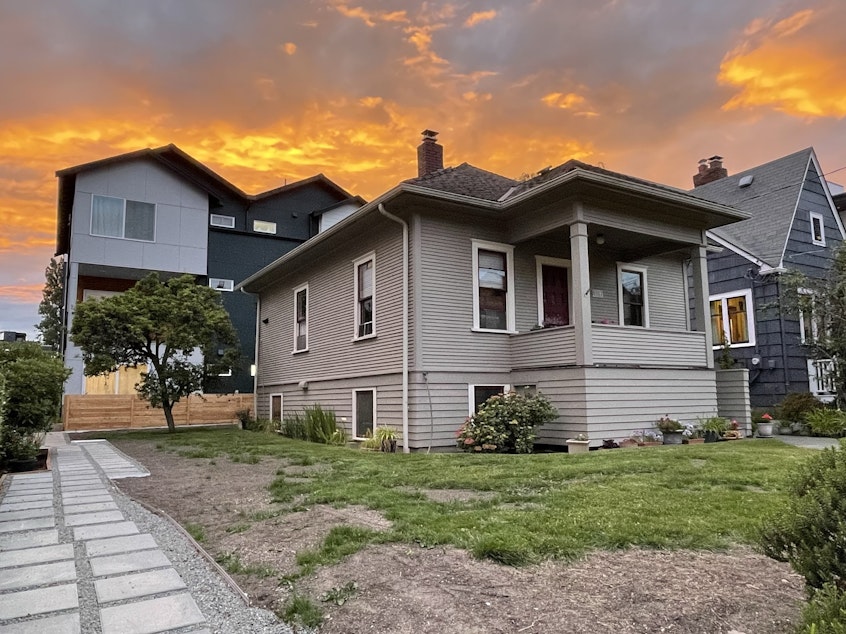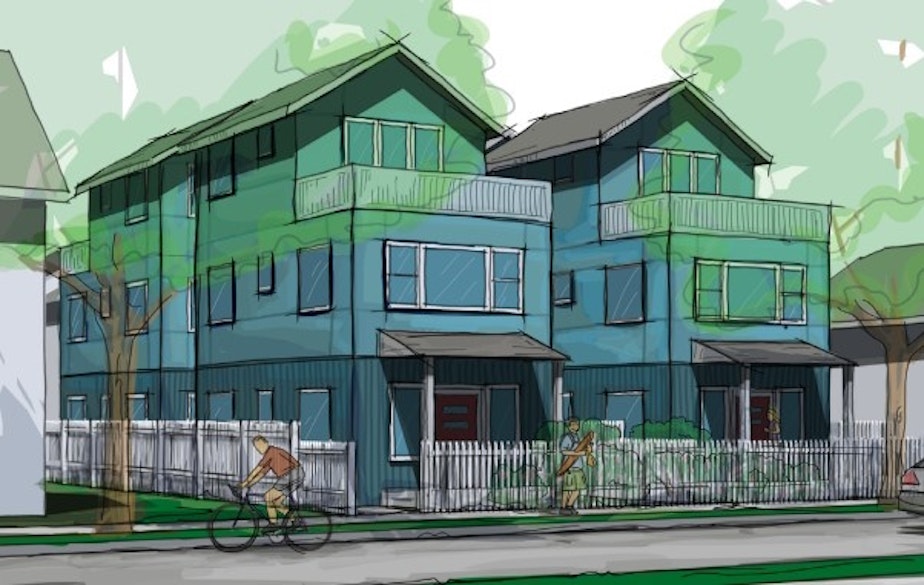Will Seattle's new growth plan produce enough housing for newcomers?

How Seattle will make room for a couple hundred thousand newcomers became clearer Tuesday when the city released a draft of its updated comprehensive plan, called the One Seattle Plan.
The plan shapes how the city will grow over the next 20 years, and is now required by the state to be updated every 10 years. One big question is whether the plan will encourage enough housing for all the people moving to the city.
RELATED: 'Co-Living' bill would revive a nearly extinct affordable housing type in Washington cities
The plan doubles down on a strategy of clustering denser forms of housing around frequent transit. These areas — which include large new apartment buildings in their centers and townhomes around their edges — have absorbed 83% of the city's growth in the last 10 years.
For all the work they're doing, those dense clusters are quite small.
You could think of them like the raisins in a cinnamon-raisin bagel — most of the bagel is actually bread, or the lower density parts of Seattle currently dominated by single-family homes.
Because those zones make up so much of the city, changes to what may be built there have the potential to make a big difference in local housing supply.
Home developer Roque de Herrera is chair of the Seattle Builders Council at the Master Builders Association of King and Snohomish Counties. He said he likes what he sees in the draft plan.
“This is good work on the part of the city of Seattle,” he said.
De Herrera gave an example of how the plan will increase the amount of housing he can build.
Under the current rules, the most you can build on most standard lots in Seattle is a main house with a mother-in-law apartment, and a smaller backyard cottage. That's three homes.
De Herrera said the proposed new rules would let him build four separate cottage homes on each lot, or six if the property's near transit.


“Buyers really like detached units — and it’s most similar to a single-family house, traditionally."
On the other hand, architect Matt Hutchins said the plan doesn't change low-density neighborhoods enough.
"I think this is a missed opportunity. Everyone is feeling the housing crunch," he said, adding that Seattle's only introducing a small increment of housing to existing neighborhoods.
"We're not really embracing the challenge that we face," he said, which is a shortage of housing that has driven home prices significantly higher over the years.
"This [plan] doesn’t really recognize the scale of that need," he added.
RELATED: Tacoma approaches affordable housing from a new angle: anti-displacement
Hutchins said he hopes the city will improve the plan in its final draft by more aggressively changing low density zones, and significantly expanding the size and number of higher density zones that allow apartment buildings.
You can comment on the draft comprehensive plan, known as the One Seattle Plan, here.
A related report detailing how new homes would look and how the plan intends to incorporate changes required by the state's new "middle housing" bill is here. That bill requires Seattle to include four-plexes and sometimes six-plexes in low density neighborhoods.
A draft Environmental Impact Statement with more details is expected to be released Thursday, March 7.

